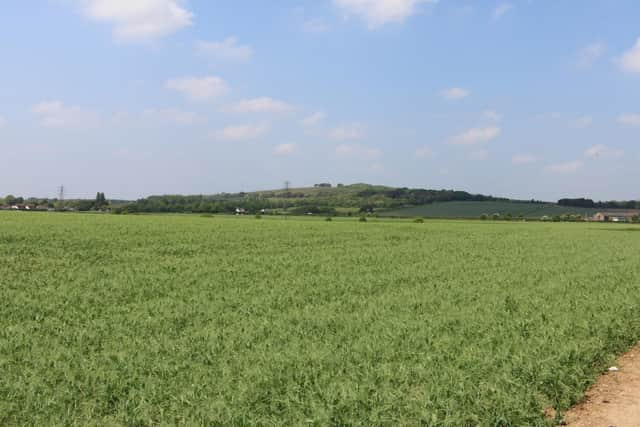Goring Gap development in Worthing: High Court backs protection of Chatsmore Farm


Persimmon Homes went to the Court of Appeal to challenge the council’s refusal to allow 475 properties on the green gap between Worthing and Ferring.
A panel of three judges rejected the developer’s case, meaning the council’s rejection of the planning application stands.
Advertisement
Hide AdAdvertisement
Hide AdDr Beccy Cooper, leader of the council, said: "Our communities have been united in their desire to keep this green land as part of our coastal environment and I am absolutely delighted by the Court of Appeal’s decision.


“We are very mindful of the need to balance our acute housing need, particularly for local residents currently struggling to afford homes here, with our need for green space. Both are essential for our community wellbeing and we will continue to balance these needs as we move forward with building new homes in Worthing and along our coastline.
“I would like to congratulate and thank all the local residents, politicians and outstanding Council officers who worked hard and stood together to speak up for Chatsmore Farm.
“In the middle of a climate emergency, protecting our green land is essential to ensure our children and grandchildren can thrive."
Advertisement
Hide AdAdvertisement
Hide AdPersimmon Homes said it was ‘naturally disappointed’ with the court’s decision, adding: “Our goal was to provide new homes in an area of extremely high housing need.
“The legal case has been focused on technical and procedural issues rather than the fundamental question of housing need. Nevertheless, we accept the judgment of the court and will not lodge any further appeals.
“As is required by the standard legal process, because the independent planning inspector was found to have made a procedural error, our planning application will now be reconsidered by a different planning inspector.”
Ed Miller, convenor of the ProGaps Alliance, said it was a ‘landmark judgment’ and ‘really good decision’.
Advertisement
Hide AdAdvertisement
Hide AdHe added: “It will protect us all from developers who set themselves up to defy local councils and build housing estates in really unsuitable places. We are all delighted that we shall keep the Goring Gap, and all the other gaps, green and pleasant land.”
In March 2021, the council refused planning permission for 475 homes to be built on the 20 acres of land, which sits within the setting of South Downs National Park.
The housebuilder successfully challenged the decision at a planning inquiry. The planning inquiry's decision was subsequently quashed by the High Court after the council appealed against the ruling.
Persimmon Homes then took its case to the Court of Appeal, to ask it to overturn the High Court’s ruling.Judges Sir Keith Lindblom, Sir Geoffrey Vos and Lady Justice Andrews heard arguments from both the developer and the council in May this year. In a written judgment, which has just been published, Sir Keith said the High Court had been right to overturn the decision of the planning inquiry because the planning inspector had not explained why he thought the development would not damage the national park.He said: “At least, in my view, the inspector’s reasons fell short of what was required in law. They leave a substantial doubt about the lawfulness of his approach to one of the principal issues he had to resolve. And that is enough to require his decision to be set aside.”
Advertisement
Hide AdAdvertisement
Hide AdClick here to read the full judgment of the Court of Appeal.